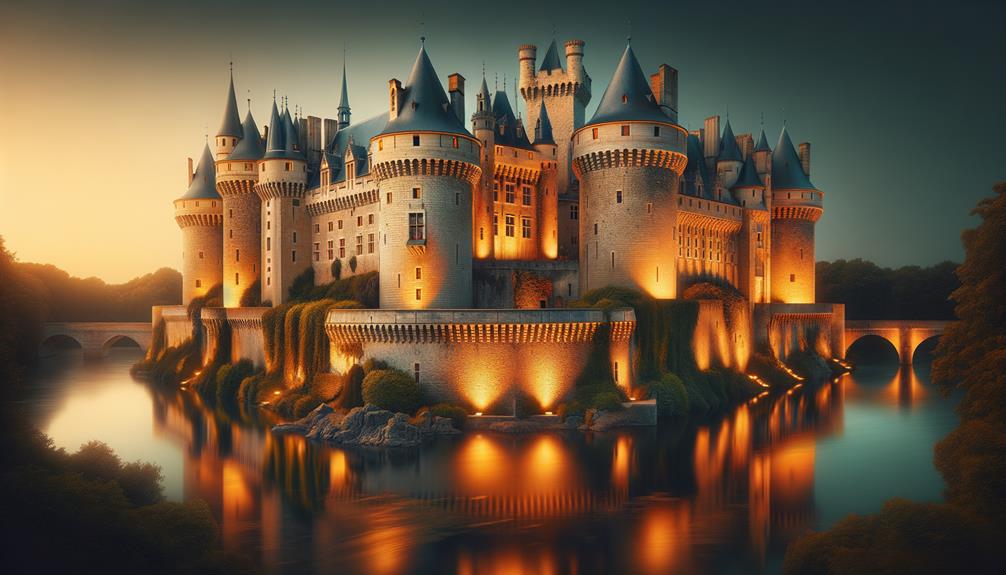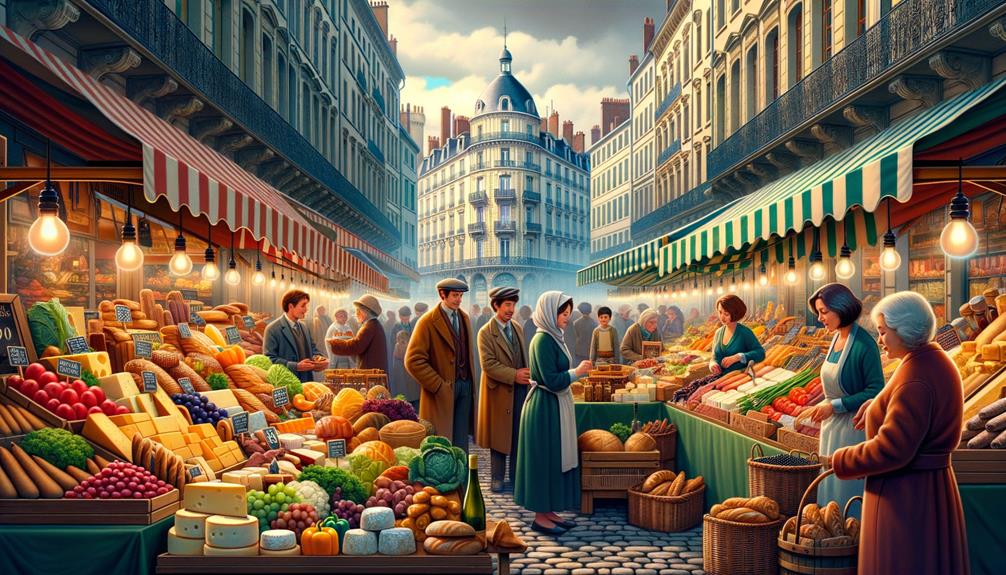As I walked through the grand gates of the Nantes Castle of Dukes, I felt a sense of history all around me. The mix of medieval defenses and Renaissance style immediately stood out. Built in the late 15th century and later improved by Anne of Brittany, the castle takes you on a journey through different eras. Each stone seems to tell a story, from its days as a military stronghold to a royal home. The real magic happens at twilight when the castle lights up. But there's so much more to see and learn here.
Historical Background
The Nantes Castle of Dukes, built in the late 15th century by François II and later improved by his daughter Anne of Brittany, is a testament to six centuries of history and Renaissance architecture. As I walked through the Château des ducs de Bretagne, I felt the weight of its storied past. This impressive fortress has played many roles: a military stronghold, a royal residence for the Dukes of Brittany, barracks, arsenal, and even a prison.
Strolling through the courtyard, I could almost see the Dukes of Brittany making crucial decisions that would shape the region's future. The castle's thick walls and towering structures seemed to tell stories of defense and strategy. The moat, now calm, once served as a vital line of defense, protecting those inside from numerous sieges.
It's amazing to think that this building, which once echoed with the sounds of battles, now hosts the Nantes History Museum. It reopened in 2007 after extensive restoration, giving new life to its ancient stones. From the accessible ramparts, I looked out over the medieval district of Nantes, feeling a deep connection to the past and a sense of freedom to explore its rich history.
Architectural Evolution
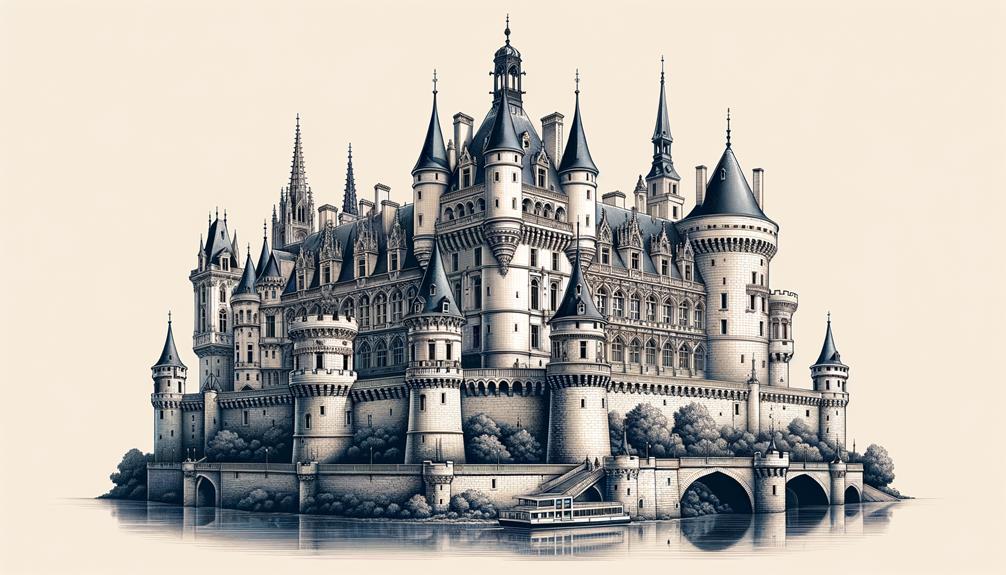
Walking through the Château des Ducs de Bretagne, I can't help but admire the beautiful mix of late Gothic and Renaissance styles. The detailed stone carvings and sculptures reflect its medieval roots and the changes brought by Anne of Brittany. Recent restorations have revitalized the castle, letting me appreciate its age-old architecture in all its renewed glory.
Medieval Foundations and Enhancements
When you step into the Château des ducs de Bretagne, you can immediately feel the blend of its medieval roots and Renaissance flair. Originally built under François II's guidance, the castle showcases the military strength of its time. Its thick walls and towering structures reflect the tactical genius of a duke determined to guard his land.
Anne of Brittany later brought a touch of elegance to the fortress. Her influence is visible in the intricate stone carvings and graceful sculptures that decorate the castle. This mix of solid medieval design and refined Renaissance art creates a special atmosphere, making the château both grand and welcoming.
| Architectural Elements | Description |
|---|---|
| Walls | Thick, fortified, and defensive |
| Towers | Robust, with strategic vantage points |
| Stone Carvings | Intricate, showcasing Renaissance influence |
| Sculptures | Graceful, adding elegance to the fortress |
As you wander through the castle, it's fascinating to see how these elements come together. The striking difference between the strong foundations laid by François II and the artistic touches added by Anne of Brittany tells a vivid story of the château's history. Each step you take reveals a tale of strength and beauty that has endured over the years.
Restoration and Modern Adaptations
Walking through the Château des ducs de Bretagne, I can't help but admire how its recent restorations have breathed new life into its ancient walls. The extensive work done in the 1990s and early 2000s has transformed this historic fortress. Originally built by François II as a military stronghold and later embellished by Anne of Brittany with Renaissance elegance, the castle has served many purposes over the centuries, from royal residence to barracks and even a prison.
As I wander through the refurbished towers and palaces, I'm struck by the seamless blend of historical authenticity and modern updates. The restorations culminated in a grand reopening in 2007, marking a new chapter in the castle's long history. One of the most engaging modern additions is the Nantes History Museum, located within the castle's storied walls. Interactive exhibits draw me in, making the rich tapestry of Nantes' history come alive.
The castle's transformation isn't merely cosmetic; it's a rebirth. The mix of old and new invites visitors to explore its corridors, engage with its past, and imagine its future. It's a testament to how history can evolve yet remain timeless.
Restoration Efforts
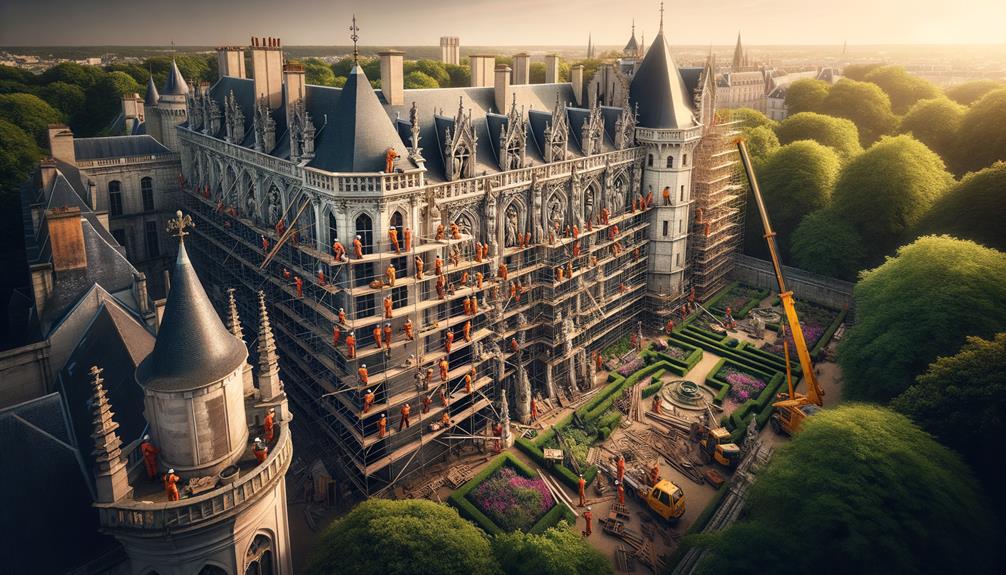
In the 1990s, focused efforts brought new energy to key parts of Nantes Castle, including the Jacobins Tower and Principal Governors Palace. As I strolled through the Château des ducs de Bretagne, I could almost feel the history in the carefully restored walls. The grandeur of the Dukes' residence was evident, with each stone and arch sharing stories from the past.
The Military Saddlery, refurbished in 1997, now hosts temporary exhibitions, merging the old with the new. It's a great example of how the castle keeps its heritage alive while welcoming modern touches. Walking through the Grand Logis, I was captivated by the restored bell tower and spires of the Golden Crown Tower, returned to their original splendor in 2000. The intricate details were stunning, showing the dedication of the restoration teams.
After 15 years of extensive work, the Château des ducs de Bretagne reopened in 2007, showcasing its historical beauty to the world. The interiors, meticulously restored, now house the Nantes History Museum, but that's a story for another day. Today, the castle stands as a testament to resilience and timeless charm.
Museum Exhibits
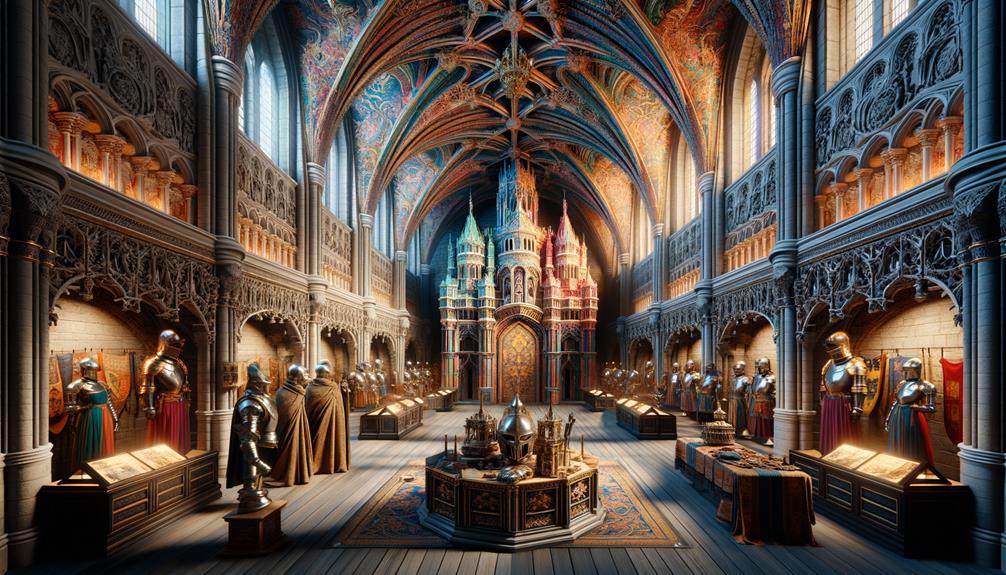
Leaving the magnificent architecture of the restored castle behind, I stepped into the Nantes History Museum and was immediately drawn into the city's vibrant past. Located within the Castle of the Dukes, this museum offers a fascinating glimpse into Nantes' journey from Gallo-Roman times to today.
As I wandered through the museum's seven sections, I was captivated by more than 850 objects spanning centuries. Each display, whether focused on trade, social upheaval, or city growth, vividly showcased the evolution of Nantes. The thoughtfully arranged artifacts made history feel alive and present.
One of the highlights was a multimedia installation by a contemporary artist, which added a modern twist to the historical storytelling. This creative blend brought the city's rich heritage into sharper focus.
The museum's dedication to its principles was clear in its decision to cancel an exhibition on Genghis Khan and Mongolia in 2020, standing against external influences. Reopened in 2007 after 15 years of detailed restoration, the Nantes History Museum within the Castle of the Dukes stands as a testament to the city's enduring spirit.
Illuminated Castle
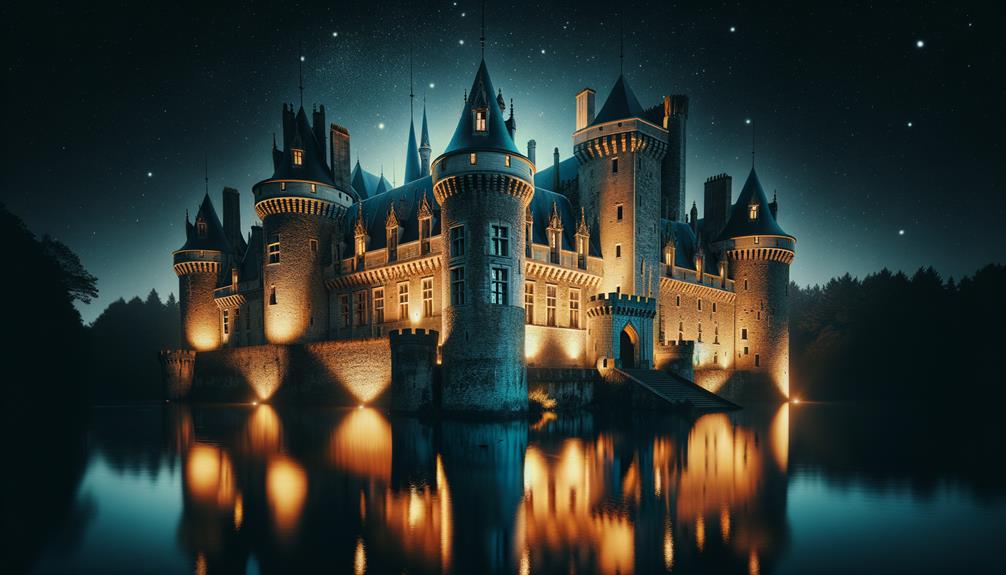
At night, the Château des Ducs de Bretagne in Nantes turns into a stunning display of light and shadow. As darkness falls, the castle's walls light up with intricate patterns and vibrant colors, creating a magical atmosphere. This amazing light show, crafted by Sylvie Sieg and Pierre Nègre, earned the prestigious Light Originator Prize at the Lumiville Trophy in 2007.
Walking around the illuminated castle, it's hard not to be impressed by how the lights highlight the architectural details and historical significance of the site. The play of light and shadow reveals features that remain hidden during the day, adding depth to the experience of exploring this former stronghold of the ducs de Bretagne.
The lights not only beautify the structure but also make it stand out in Nantes' lively urban landscape. The glowing castle evokes a sense of wonder, making it a captivating visual treat for everyone.
| Feature | Description |
|---|---|
| Designers | Sylvie Sieg and Pierre Nègre |
| Award | Light Originator Prize of the Lumiville Trophy |
| Lighting Effect | Highlights architectural beauty |
| Urban Context | Enhances appeal of Nantes |
| Visual Impact | Creates a magical spectacle |
Every evening, the Château des Ducs de Bretagne invites everyone to enjoy its illuminated splendor.
Visitor Information
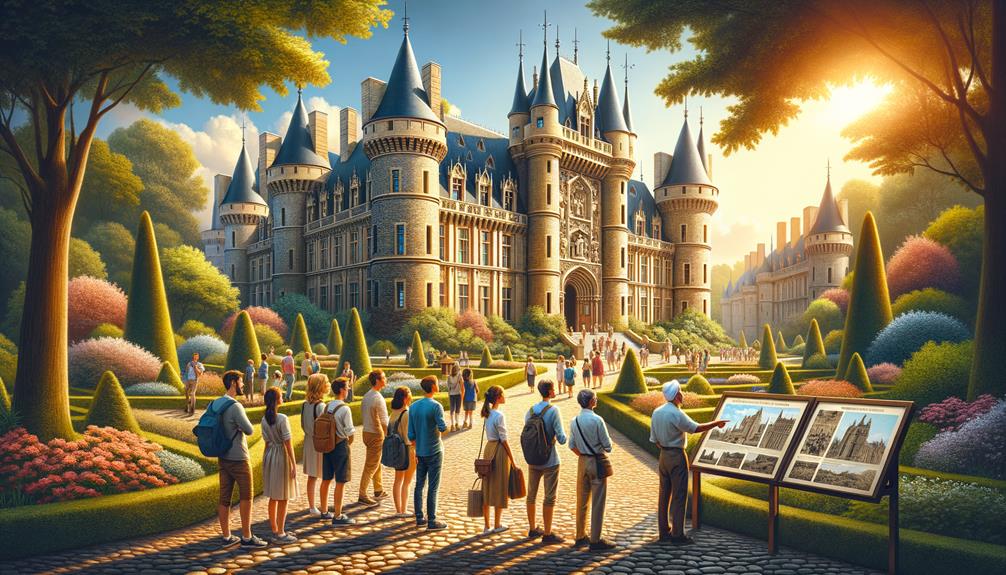
When I visited the Château des Ducs de Bretagne, I was excited to see a range of guided tours available throughout the year. The castle's rich history really comes to life on these tours and it's also close to other interesting spots in Nantes. Whether you're checking out the fortifications or nearby museums, there's always something to catch your interest.
Guided Tour Options
Picture yourself wandering through the grand courtyards of Nantes Castle, with a knowledgeable guide bringing its rich history to life. The Château des Ducs de Bretagne, located in the heart of the city, offers a range of guided tours that delve into Nantes' storied past. There's something for everyone, ensuring an engaging historical experience.
Walking tours and sightseeing tours usually run about 3.5 hours, giving you plenty of time to appreciate the architectural beauty and hear captivating stories of days gone by. If you prefer a more tailored experience, private 3-hour tours with official guides can provide personalized insights into the castle's history. There are also specialized tours for photography enthusiasts or fans of wine and history, adding a unique flavor to your visit.
For those who like to explore at their own pace, interactive options such as scavenger hunts and self-guided tours highlight hidden gems and notable landmarks within the castle grounds. These diverse tour options at the Château des Ducs de Bretagne ensure that every visitor can find a meaningful connection with Nantes' vibrant history.
Open Year-Round
While looking into guided tours, I found out that Nantes Castle, also known as the Château des Ducs de Bretagne, is open all year. This means there are endless chances to dive into its rich history. The castle is always welcoming visitors, allowing us to roam its historic halls at our leisure. This freedom makes it possible to have a personal exploration of the lives of past residents like François II and Anne of Brittany.
As I wandered the impressive grounds, I couldn't help but be amazed by the well-preserved architecture. The sturdy ramparts and the lush moat gardens create a peaceful yet majestic setting, making it easy to imagine the castle's lively past. The courtyard stands out as a key point of the castle, inviting and awe-inspiring, echoing with history.
Self-guided tours available until December 31, 2024, let you dive into the legacy of the Dukes of Brittany without being tied to a strict schedule. It's a freeing experience, perfect for those who like to explore at their own pace. Every corner of the Château des Ducs de Bretagne has a story to tell, and each visit reveals something new.
Nearby Attractions
Located right in the medieval heart of Nantes, the Château des Ducs de Bretagne is surrounded by attractions that invite further exploration. The castle itself, with its beautiful courtyard, towering ramparts, and peaceful moat gardens, offers a glimpse into history. But the experience doesn't end at the castle gates.
Just a short distance away, you'll find the impressive Musée d'histoire de Nantes, housed within the castle. This museum features over 850 objects, each telling a piece of the city's rich story. For a small fee, you can dive deeply into Nantes' heritage, while enjoying free access to the courtyard and gardens.
Here's a quick guide to some must-visit nearby attractions:
| Attraction | Highlights | Distance from Castle |
|---|---|---|
| Les Machines de l'île | Giant mechanical animals | 15-minute walk |
| Cathédrale Saint-Pierre | Gothic architecture | 10-minute walk |
| Le Lieu Unique | Cultural center, café | 5-minute walk |
Each of these spots offers a unique experience, making your visit to the Château des Ducs de Bretagne just the start of an intriguing journey through Nantes. Whether you're wandering the medieval streets or admiring mechanical creations, there's always something new to see.
Virtual Exploration
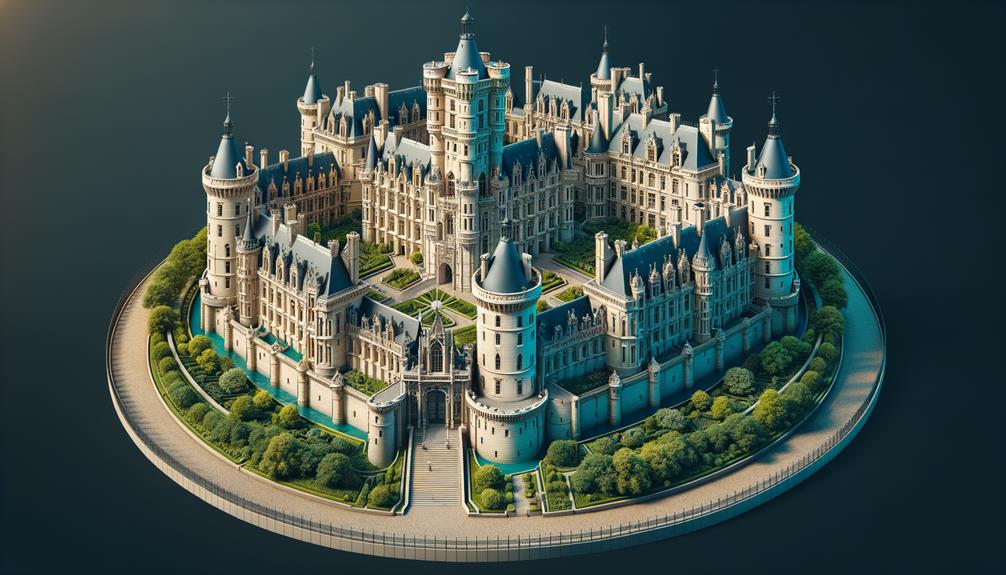
Taking a virtual tour of the Château des Ducs de Bretagne was an immersive experience that vividly brought the castle's rich history and architectural beauty to life. The virtual tours offered a unique chance to explore this former ducal residence's intricate details from the comfort of my home. Navigating the castle's digital corridors made me feel deeply connected to its past, showcasing how technology can bridge centuries.
The virtual tour was designed to feel as real as possible, with detailed visuals and historical stories. I learned about the castle's significance in Nantes' history and the region, as well as the efforts put into restoring it.
Here are some highlights:
- Interactive 3D models: These allowed me to zoom in on architectural details, showing the craftsmanship involved.
- Historical timelines: These added context and deepened my understanding of the castle's evolution over the years.
- Audio guides: Narrated by historians, they brought to life the stories of the ducs de Bretagne.
- Virtual walk-throughs: These gave me the freedom to explore every corner at my own pace.
This virtual journey was a liberating experience, proving that history can be both accessible and engaging.
Surrounding Area
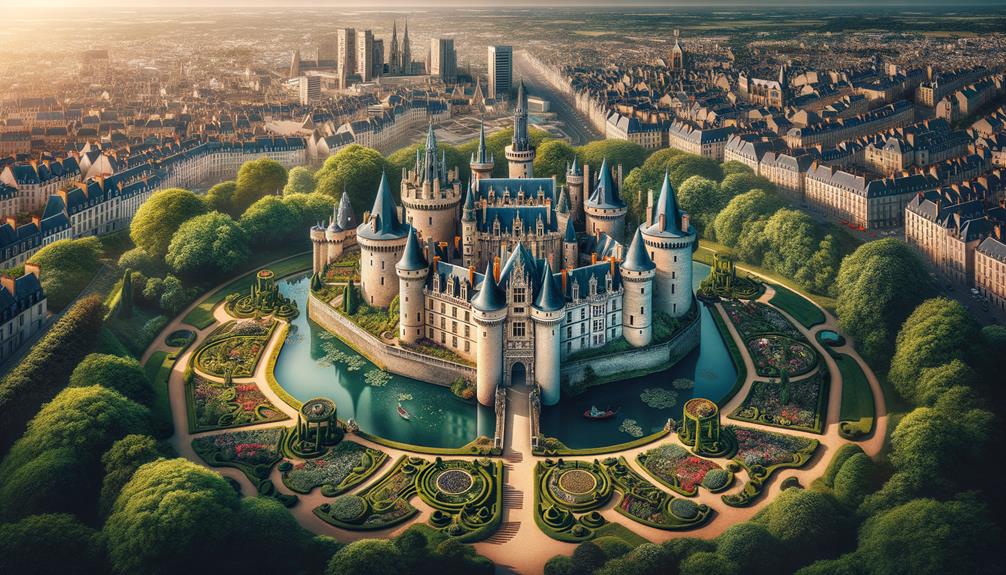
Wandering around the Nantes Castle of Dukes, I was swept up by the medieval charm of Nantes' historic quarter. The castle, also known as the Château des ducs de Bretagne, is the centerpiece of this enchanting neighborhood. Walking along cobblestone streets, I admired the blend of history and modern life.
As I moved through the lush gardens and green spaces, a sense of peace washed over me. These quiet spots provided a nice break from the city's hustle and bustle, inviting me to relax and enjoy the calm. The well-kept surroundings added to the castle's allure.
Close by, a variety of cafés, restaurants, and shops caught my eye. Each spot, housed in charming, centuries-old buildings, seemed to have its own unique story. I enjoyed a leisurely coffee at a quaint café, watching both visitors and locals soak up the lively atmosphere.
Getting to the castle is easy, whether you take public transport or walk. This convenience makes it a great spot for a day out. The area around the castle complements its historical charm, creating a lively and engaging space that truly reflects the heart of medieval Nantes.
Frequently Asked Questions
Why Is Nantes Not Part of Brittany?
People often say, "The past is a foreign country." I think Nantes is a good example of this idea. Back during the French Revolution, Nantes decided to support the Republic instead of sticking with Brittany. This choice gave it a unique identity, separate from its historical connections to Brittany.
What Is Special About Nantes, France?
What makes Nantes special? It's a city where history and modern life intertwine. Art installations are scattered across the streets, daily markets are lively and bustling, and the Loire River provides a peaceful backdrop. It's a place full of opportunities for exploration and a sense of freedom.
Which French City Containing the Castle of the Dukes of Brittany?
Nantes, located in northwestern France, is home to the historic Castle of the Dukes of Brittany. Walking through its winding paths and ancient structures, you can feel a sense of timeless freedom and fascination with each step you take in its storied halls.
When Did the Castle of the Dukes of Brittany Become a Home for French Kings?
The Castle of the Dukes of Brittany became a residence for French kings in the late 15th century. I can almost picture Duke Francois II laying the groundwork and Anne of Brittany adding her personal touch, turning it into a royal home.

